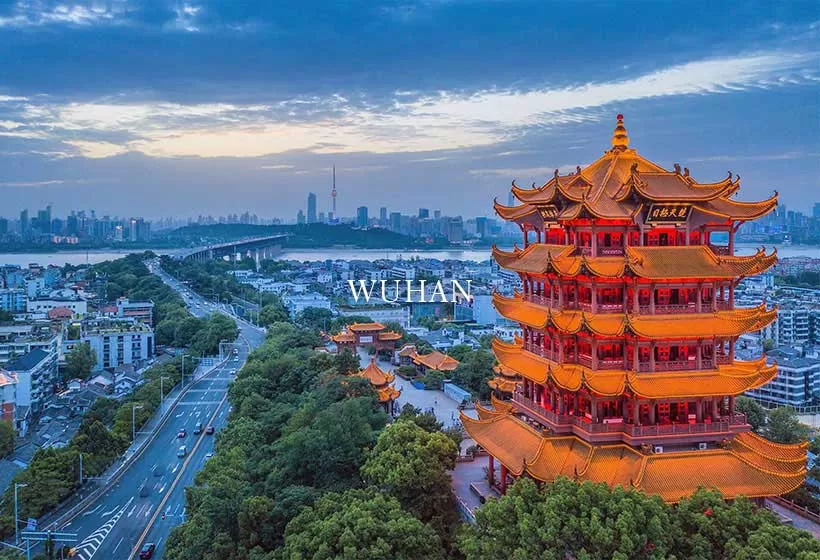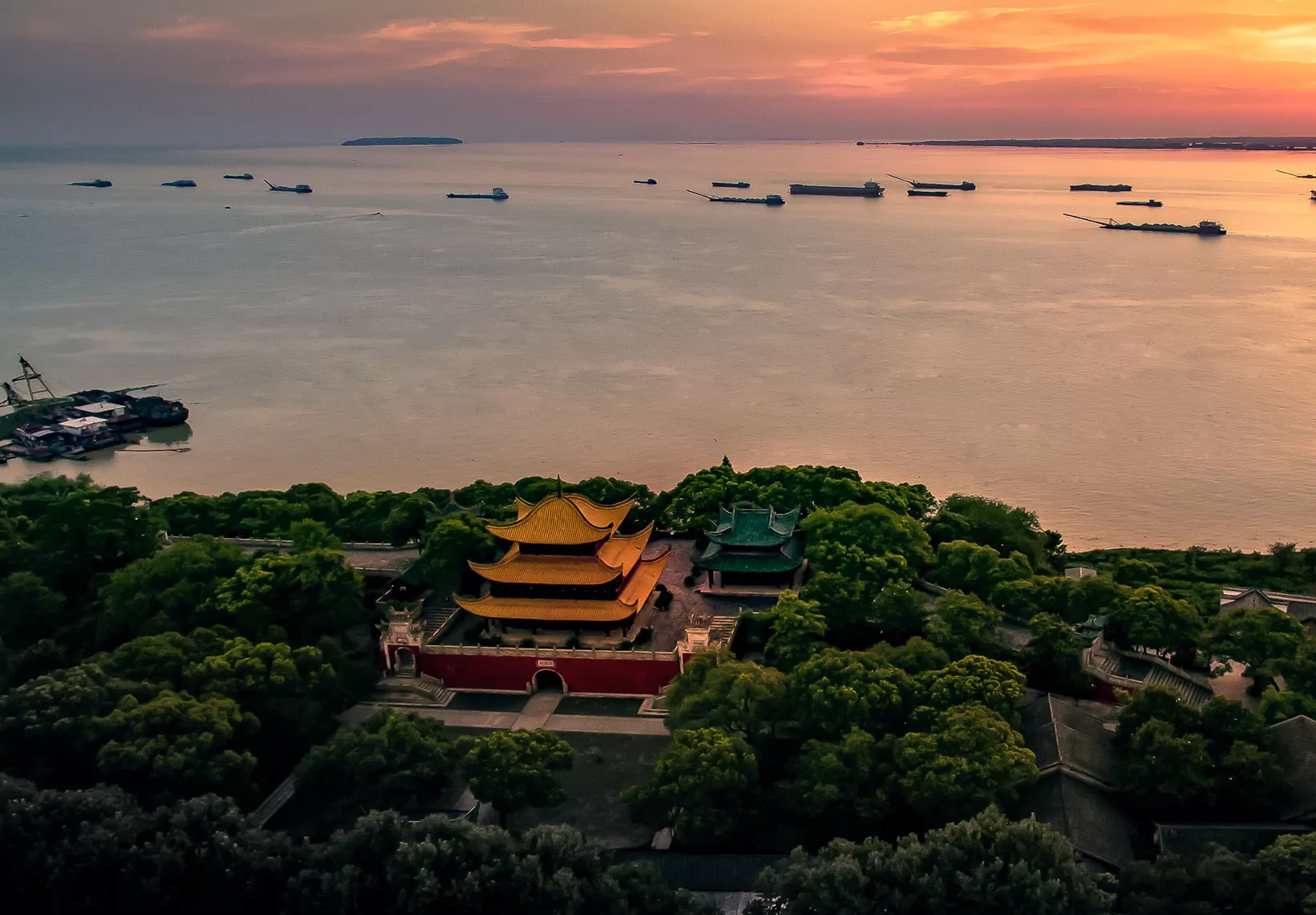Wuhan Trave Itineraries
Wuhan is a city of great rivers, vast lakes, and gentle hills.
The mighty Yangtze River runs through its city center, where it meets the Han River, dividing and uniting the three towns into the greater Wuhan. Dotted across the city are countless lakes, led by the expansive East Lake, while numerous small hills are perfectly scattered throughout. Railways from Beijing, Shanghai, Guangzhou, and Chengdu all converge here, laying the foundation for Wuhan's extraordinary economic potential. As a major transportation hub connecting nine provinces, Wuhan is destined to be a melting pot of materials and cultures. Together, they give rise to the city's romantic cherry blossoms, picturesque landscapes of lakes and mountains, rich Han-style cuisine, and the profound cultural heritage of ancient Jingchu civilization.
While all itineraries are flexible, we've provided a recommended itinerary to help you. If you need a customized Wuhan itinerary, please contact us.
1-day Wuhan Itinerary
Wuhan's most distinctive attraction is East Lake, the largest urban lake in China, and surrounding it are several major landmarks such as Wuhan University, Hubei Provincial Museum, the statue of Qu Yuan, the Cherry Blossom Garden, and Happy Valley amusement park. If you only have one day in Wuhan, spending it around East Lake would be an excellent choice. Of course, Wuhan iconic landmark Yellow Crane Tower, No.1 alley of Wuhan-style snack Hubu Alley, and No.1 bridge across the Yangtze River Wuhan Yangtze River Bridge are all nearby. Taking some time to snap a few photos with these landmarks is well worth it.
- 9:00 AM: Start your day with a visit to the Yellow Crane Tower, one of the most famous landmarks in Wuhan and a symbol of the city. Climb to the top of the tower for panoramic views of the city and the Yangtze River.
- 11:00 AM: Head to the East Lake Scenic Area, one of the largest urban lakes in China and a popular destination for outdoor recreation. Take a scenic boat ride or go for a walk along the lake's shoreline.
- 12:30 PM: Enjoy a traditional lunch at one of the local restaurants in the city. Try some of the local specialties, such as hot dry noodles or mianwo.
- 1:30 PM: Visit the Hubei Provincial Museum, one of the largest museums in China and home to a vast collection of historical artifacts, cultural relics, and artistic treasures.
- 4:30 PM: Explore the East Lake Cherry Blossom Park, a popular spot for viewing cherry blossoms in the spring and a great place for outdoor recreation and picnicking.
- 6:30 PM: End your day with a visit to one of Wuhan's night markets, where you can sample local street food and enjoy the vibrant atmosphere of the city.
2-day Wuhan Itinerary
Wuhan is divided in two by the Yangtze River, and one side is further split by the Han River, frequent river crossings making somewhat inconvenient. Therefore, it's best not to plan an itinerary that shuttles back and forth across the Yangtze in a single day, and a more suitable approach is to explore one side per day. For example, if you spend a day visiting attractions on the southern bank of the Yangtze—such as East Lake and Yellow Crane Tower in Wuchang District—then the next day is best spent on the northern bank in Jianghan and Hanyang Districts, where you can visit sites like Gude Temple, Qingchuan Pavilion, and the bustling Jianghan Road Pedestrian Street.
Day 1: Visit the Yellow Crane Tower, one of the Four Great Towers of China, located on Snake Hill by the Yangtze River. Explore the East Lake Scenic Area, which is the largest urban lake in Wuhan and home to several temples, pagodas, and scenic lakes. Visit the Hubei Provincial Museum, which has a rich collection of artifacts and cultural relics from ancient China.
Day 2: Visit the Gude Temple, a Zen building with the characteristics of religious architecture in Europe and Asia. Take a stroll along Jianghan Road, a snack street in the heart of Wuhan. Visit the Wuhan Yangtze River Bridge, a landmark suspension bridge that spans the Yangtze River. End the day by relaxing in East Lake Park, watching the sunset and enjoying the local street food.
3-day or 4-day Wuhan Itinerary
Three to four days is an ideal amount of time to explore Wuhan, allowing you to fully experience the city's Guozao culture (breakfast culture), night market culture, and dockside traditions. In spring, you can enjoy cherry blossoms at East Lake, Wuhan University, and Qingchuan Pavilion. In summer, cool off by the waters of East Lake or along the Yangtze River. Autumn is perfect for night cycling along the East Lake Greenway or admiring chrysanthemums in Shahu Park. In winter, you can admire reeds swaying along the Hankou River Beach or watch snowfall at Yellow Crane Tower. No matter the season, Wuhan has its own unique beauty waiting for you to discover.
5-day Wuhan Itinerary
Wuhan's charm extends beyond its city center—its outer districts and even surrounding cities are well worth a visit. Among the most popular tourist destinations are Mulan Tianchi in Huangpi District and Tangxun Lake in Jiangxia District, both of which are well-known resort areas offering food, entertainment, and relaxation. In addition, attractions like Jinligou, Qingliangzhai, and the Panlongcheng Ruins in Huangpi; Haichang Polar Ocean Park in Dongxihu; Jiuzhen Mountain in Caidian; and Jiangxiali in Jiangxia each showcase their own unique appeal.
Day 1: Arrive in Wuhan and explore the city's famous landmarks. Start with a visit to the Yellow Crane Tower, a stunning pagoda with panoramic views of the Yangtze River. Next, head to the Hubei Provincial Museum, which features ancient artifacts and exhibits showcasing the region's history and culture. End the day with a stroll along the bustling Han Street, a popular shopping and dining district.
Day 2: Take a day trip to the Wudang Mountains, a UNESCO World Heritage Site and one of the birthplaces of Taoism. Explore the temples, palaces, and natural scenery, and maybe even try your hand at some traditional martial arts.
Day 3: Head to East Lake, one of the largest urban lakes in China, and enjoy a scenic boat ride or a leisurely walk along the shoreline. You can also visit the Botanical Garden, which houses a wide variety of plant species from around the world.
Day 4: Experience Wuhan's food culture with a visit to a local wet market, where you can sample street food and learn about the ingredients used in traditional Wuhanese dishes. Then, take a cooking class to learn how to make some of these dishes yourself.
Day 5: Visit the Jingzhou Ancient City, located about an hour and a half from Wuhan. Explore the well-preserved city walls, gates, and temples, and learn about the city's history as a strategic military stronghold.
7-day Wuhan Itinerary
A full week is ample time, and it is best not to confine yourself to just the city of Wuhan. To the south lies the historic Red Cliffs Battlefield of the Three Kingdoms era; to the east is the birthplace of Huangmei Opera; to the north, the legendary tale of filial piety in Xiaogan; and to the west, famous sites such as Wudang Mountain, Xiangyang Ancient City, Shennongjia, and the Three Gorges await. Missing out on these would truly be a pity.
GREAT FAMILY CHINA TOUR
JULY 2024 We wanted to thank Grace at China Culture tour for organizing a great tour of China. We enjoyed our Beijing - Xian-Chengdu -Guilin -Yangshuo - Shanghai trip. Our local guides Bruce in Beijing, Susan in Xian, Jane in Chengdu, Mike in Guilin and Mary in Shanghai took care of us…read more details »
Teng Han L from SINGAPORE
Ready to Create a Unique Dream Travel?


